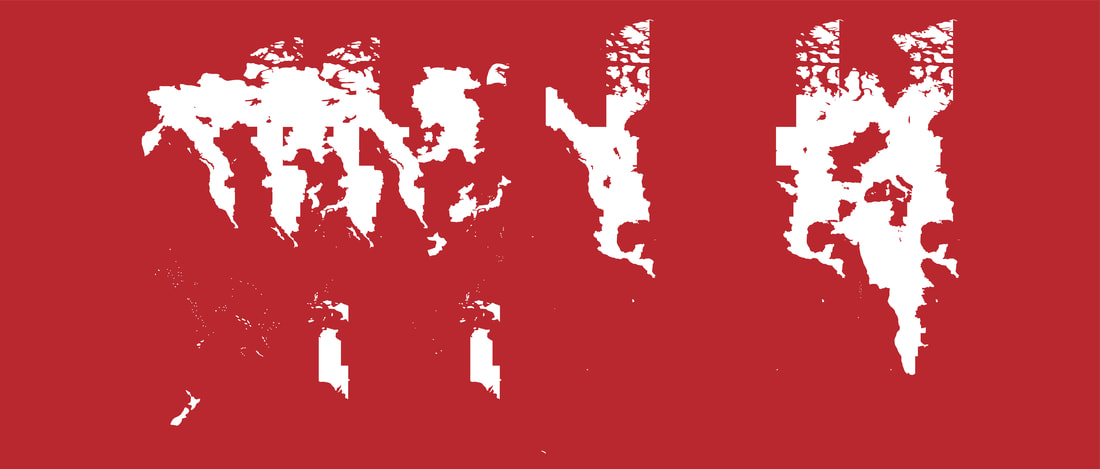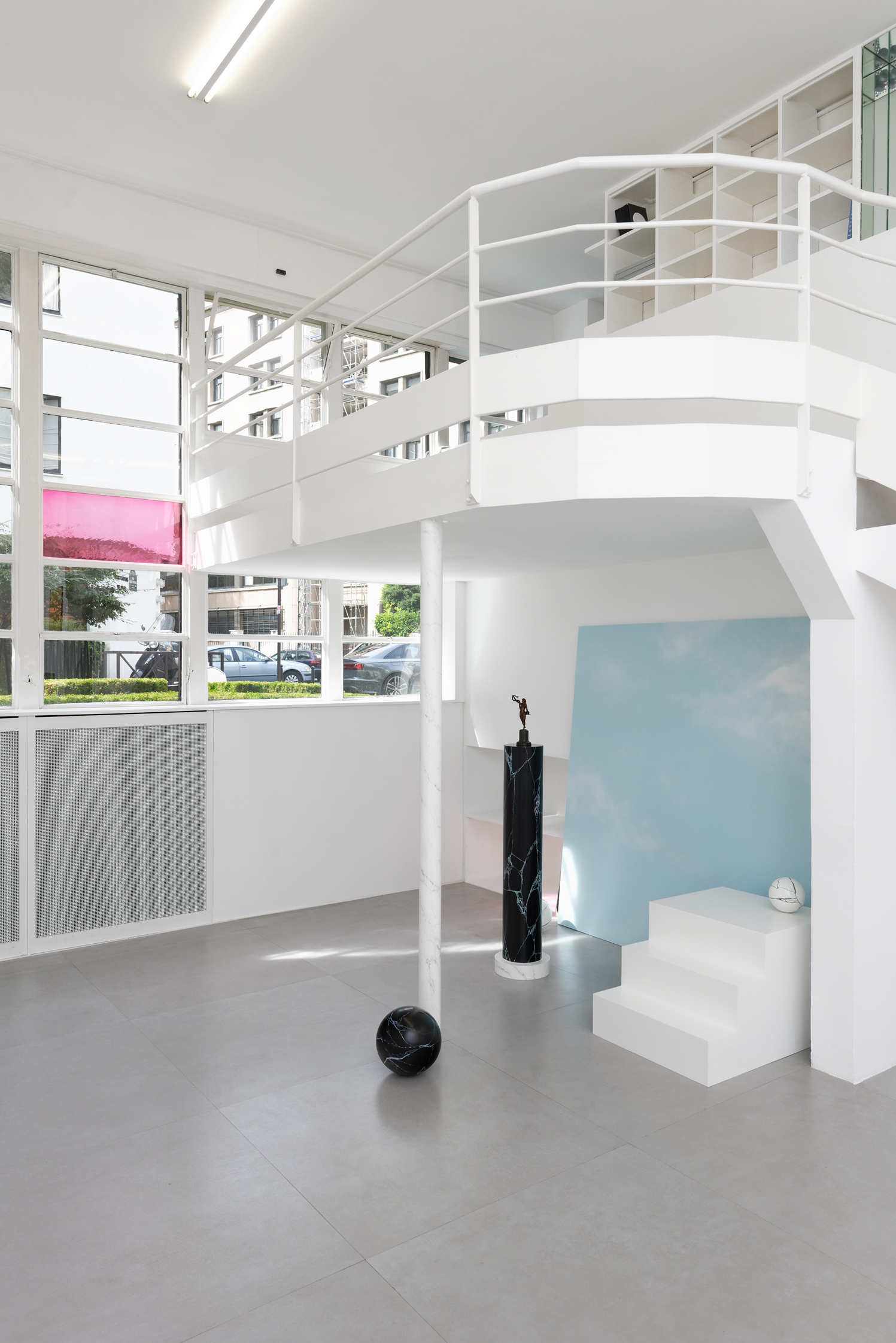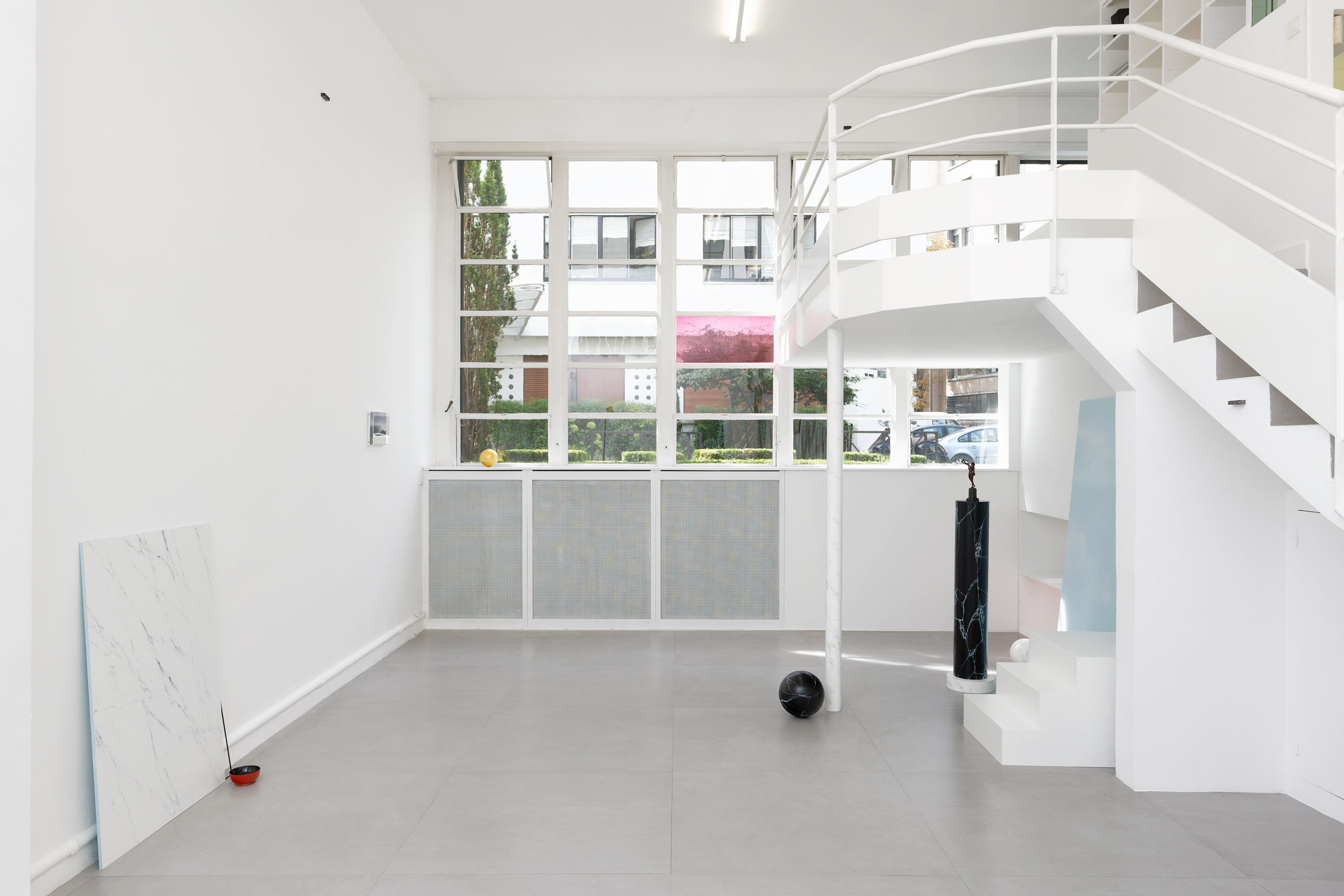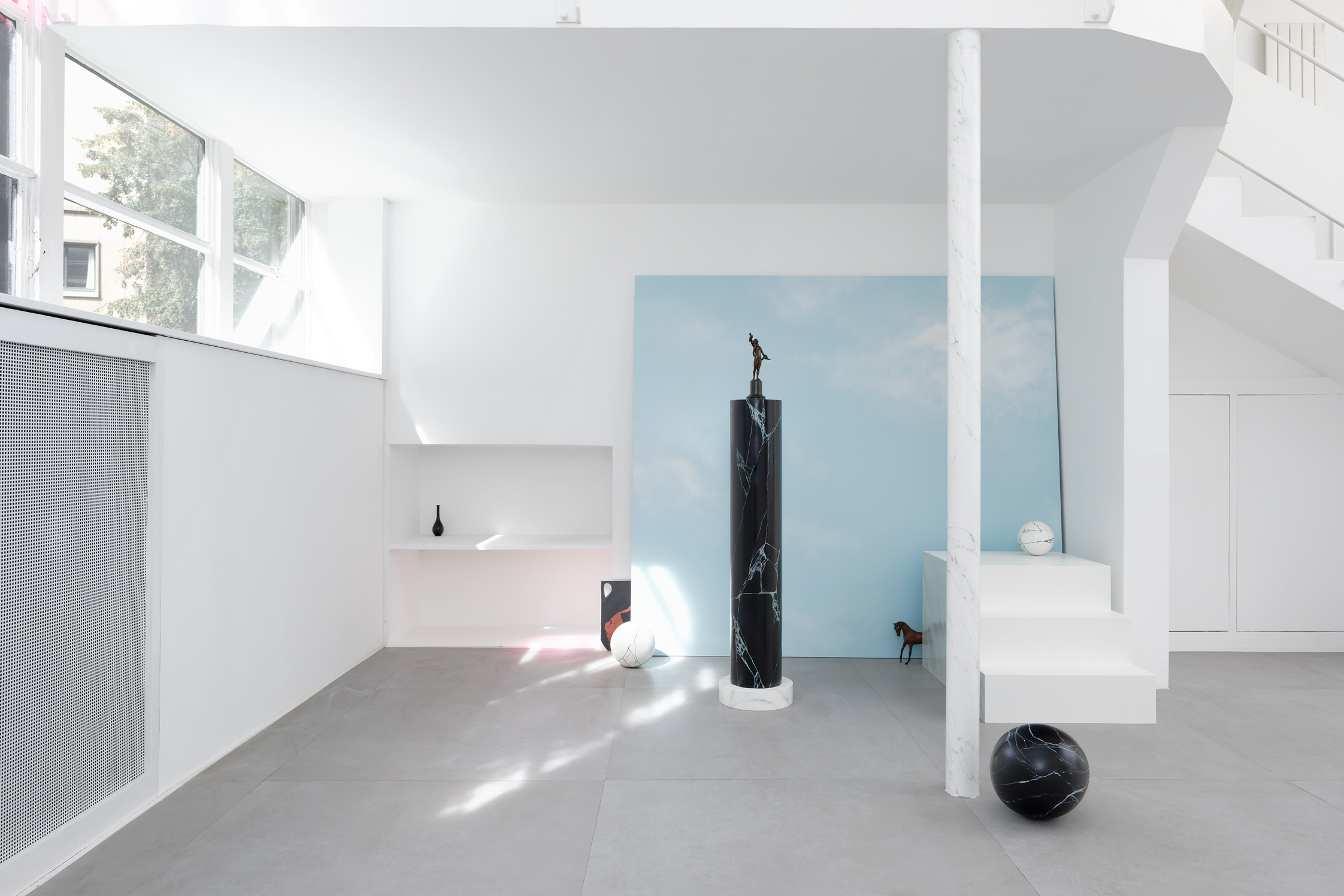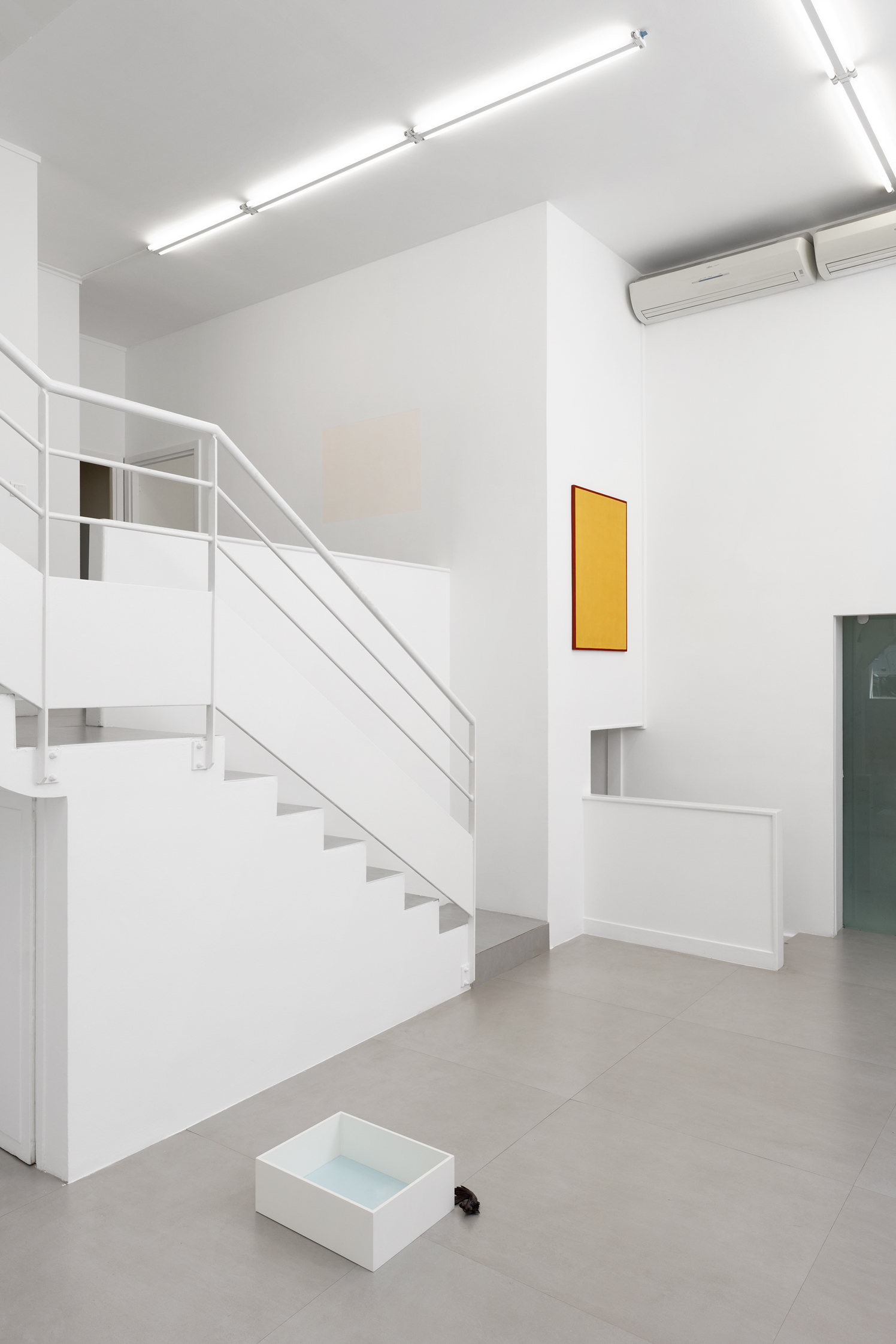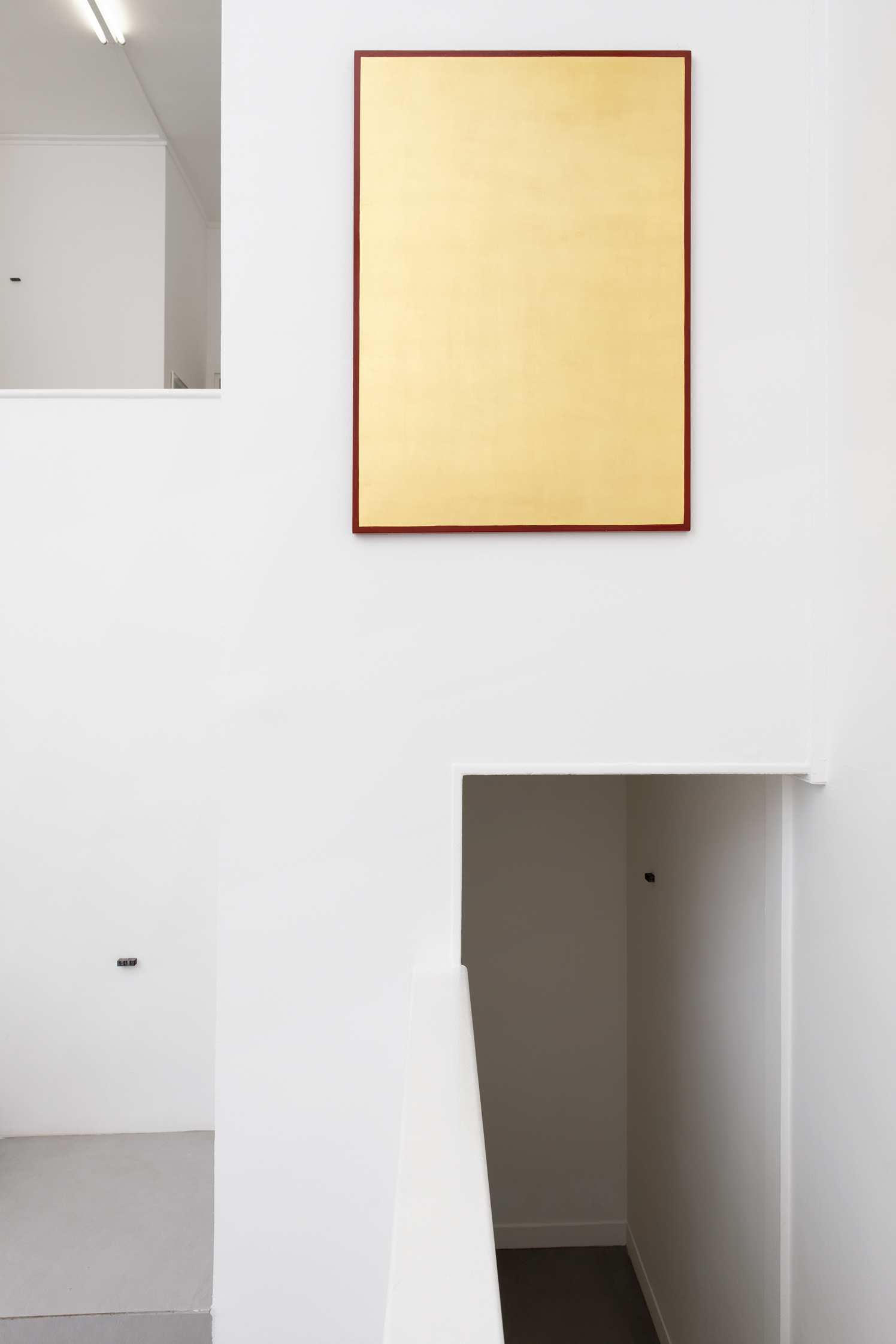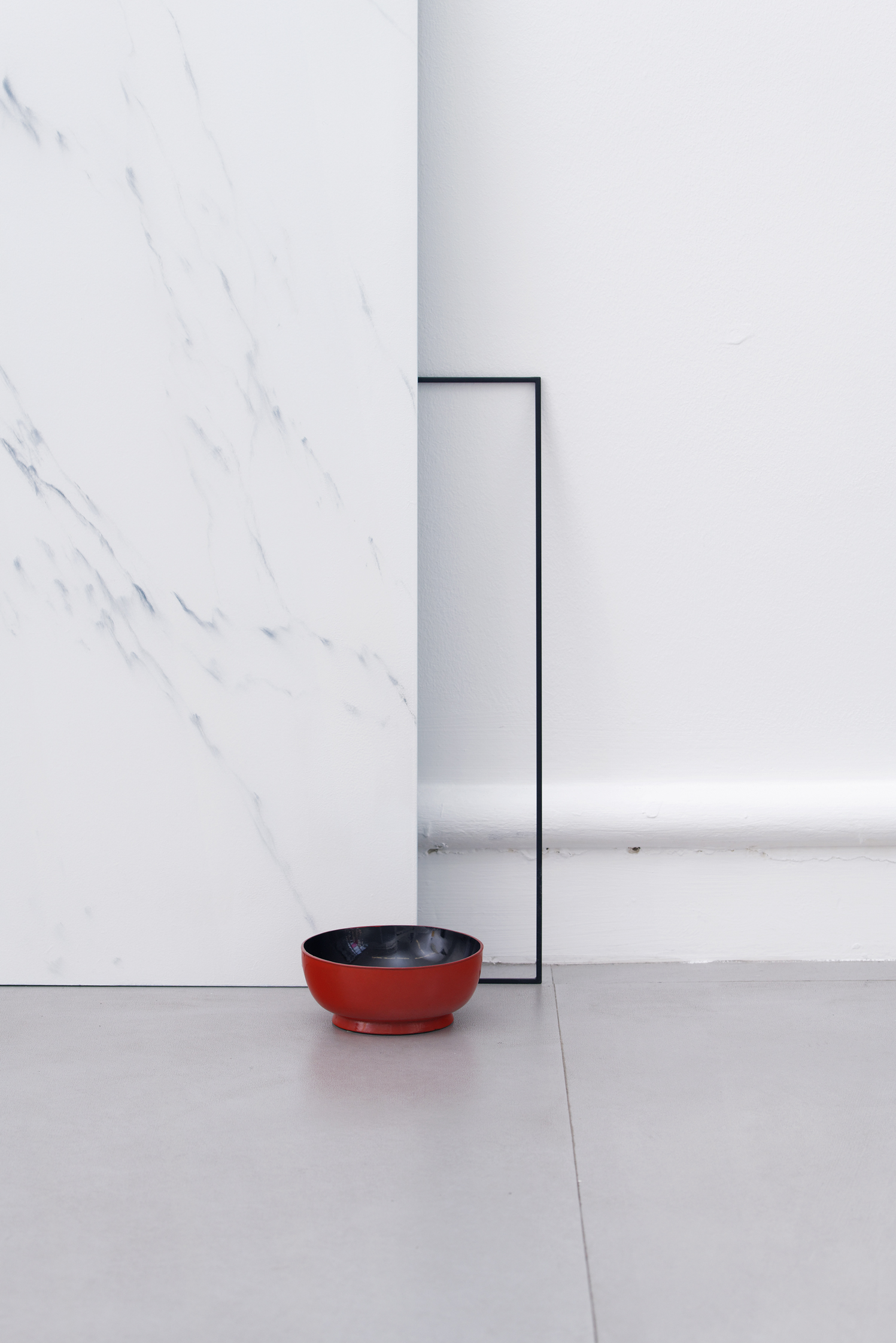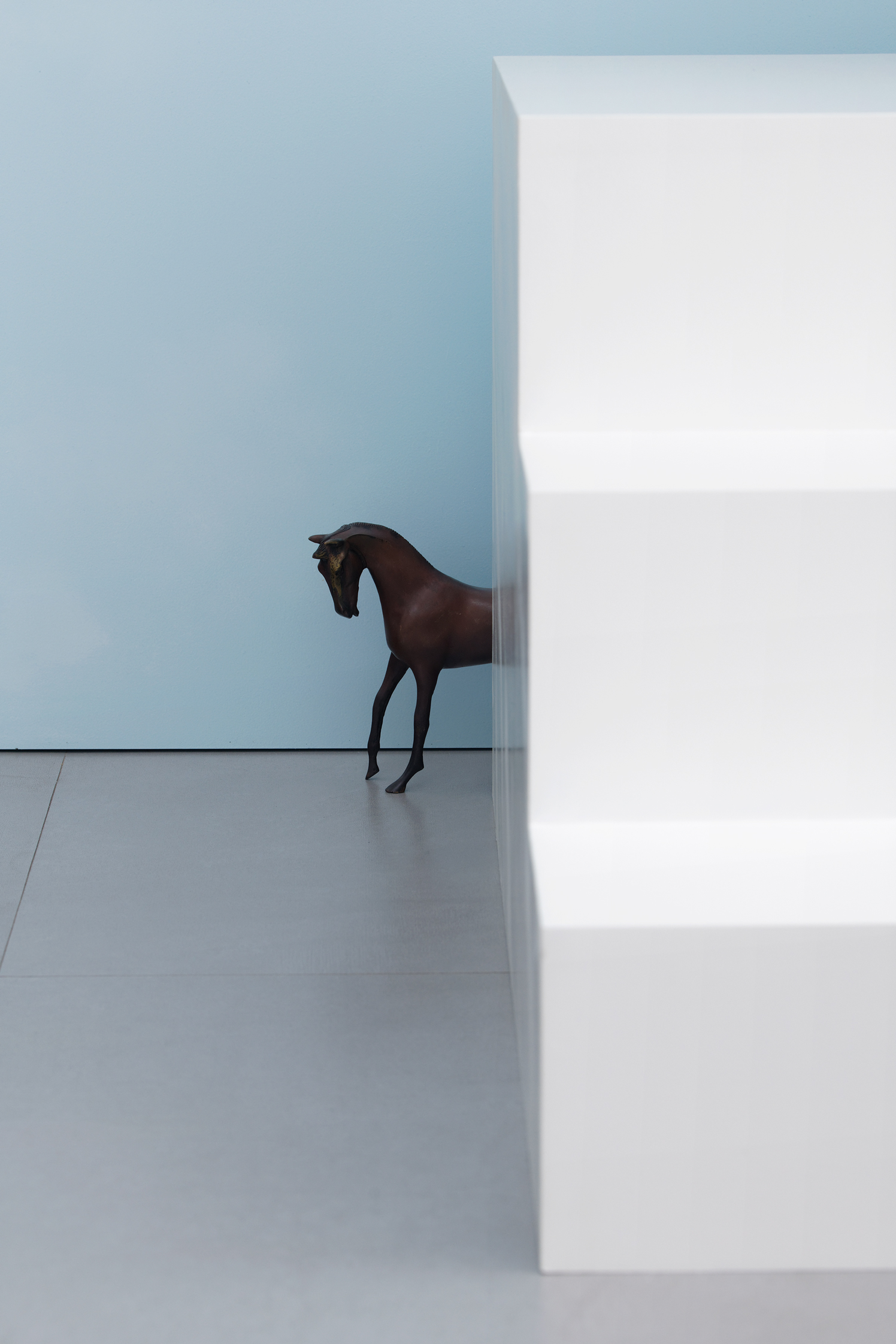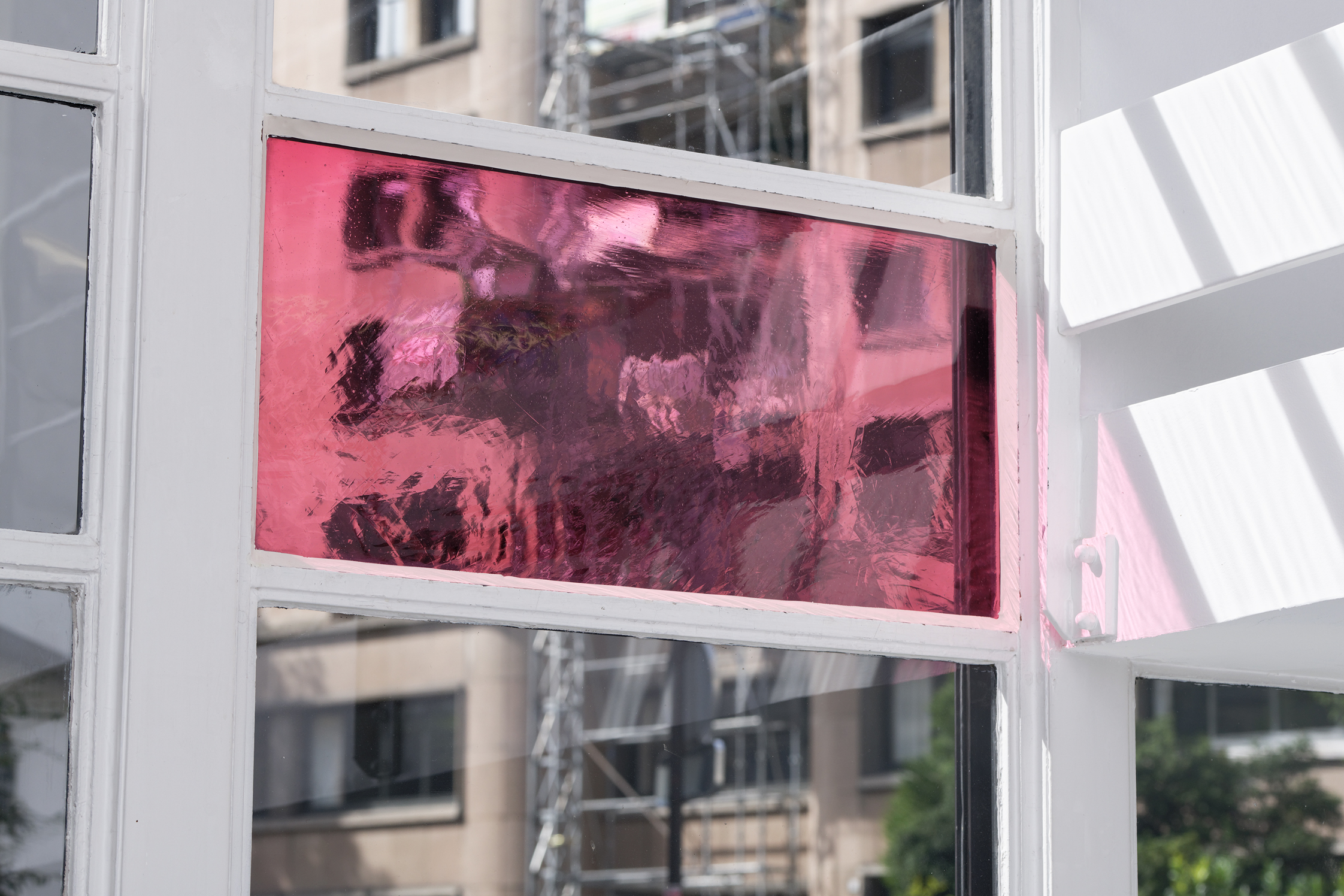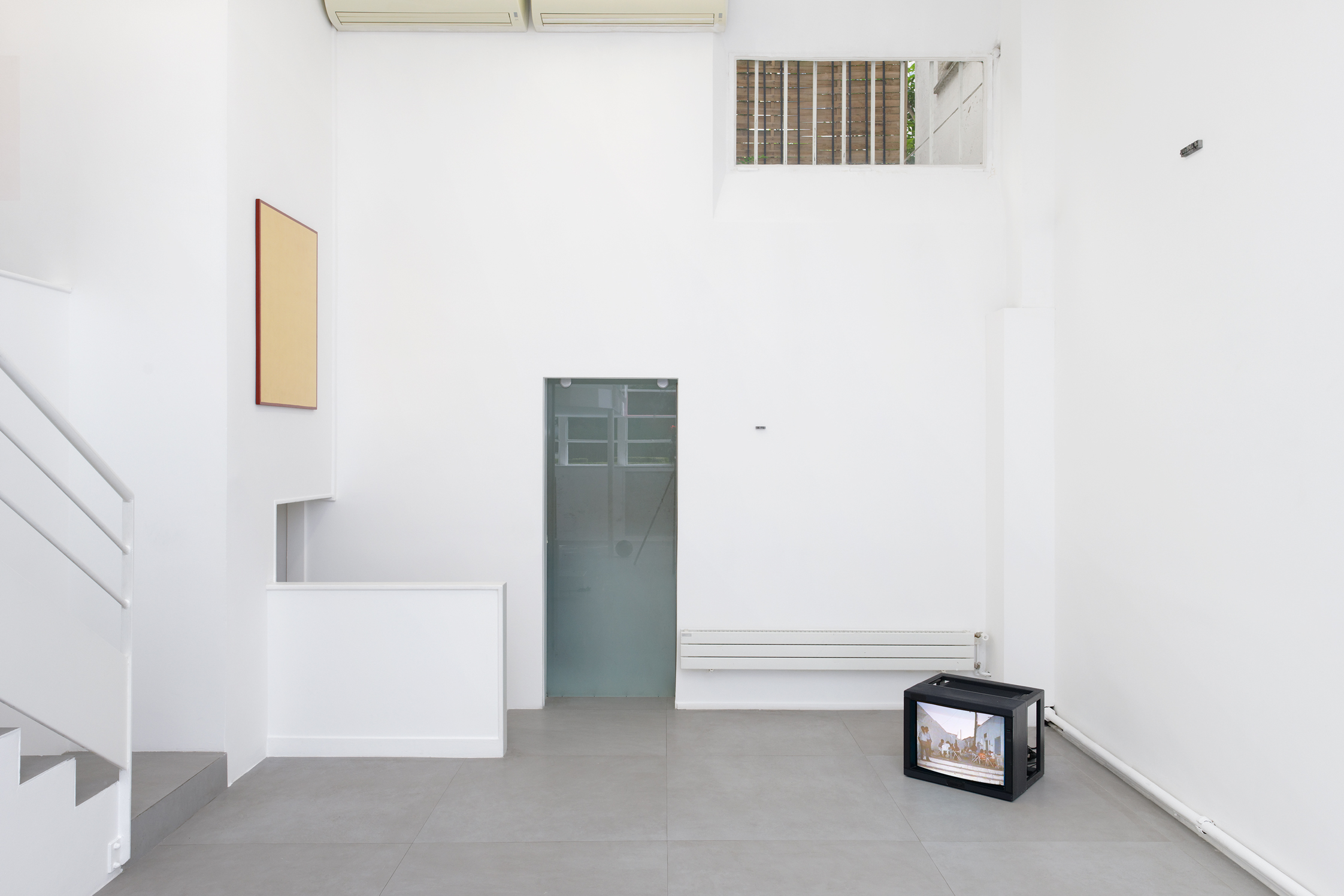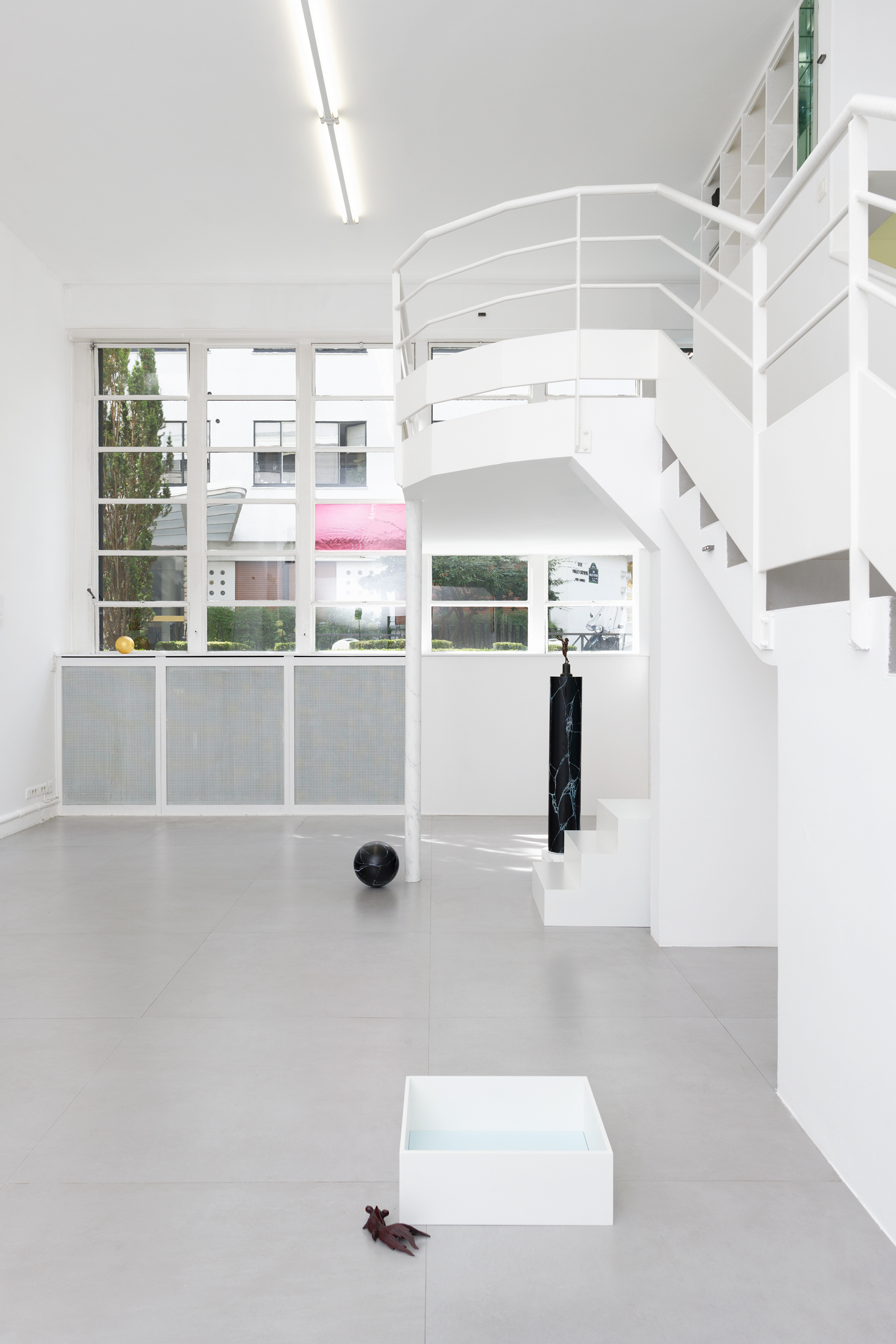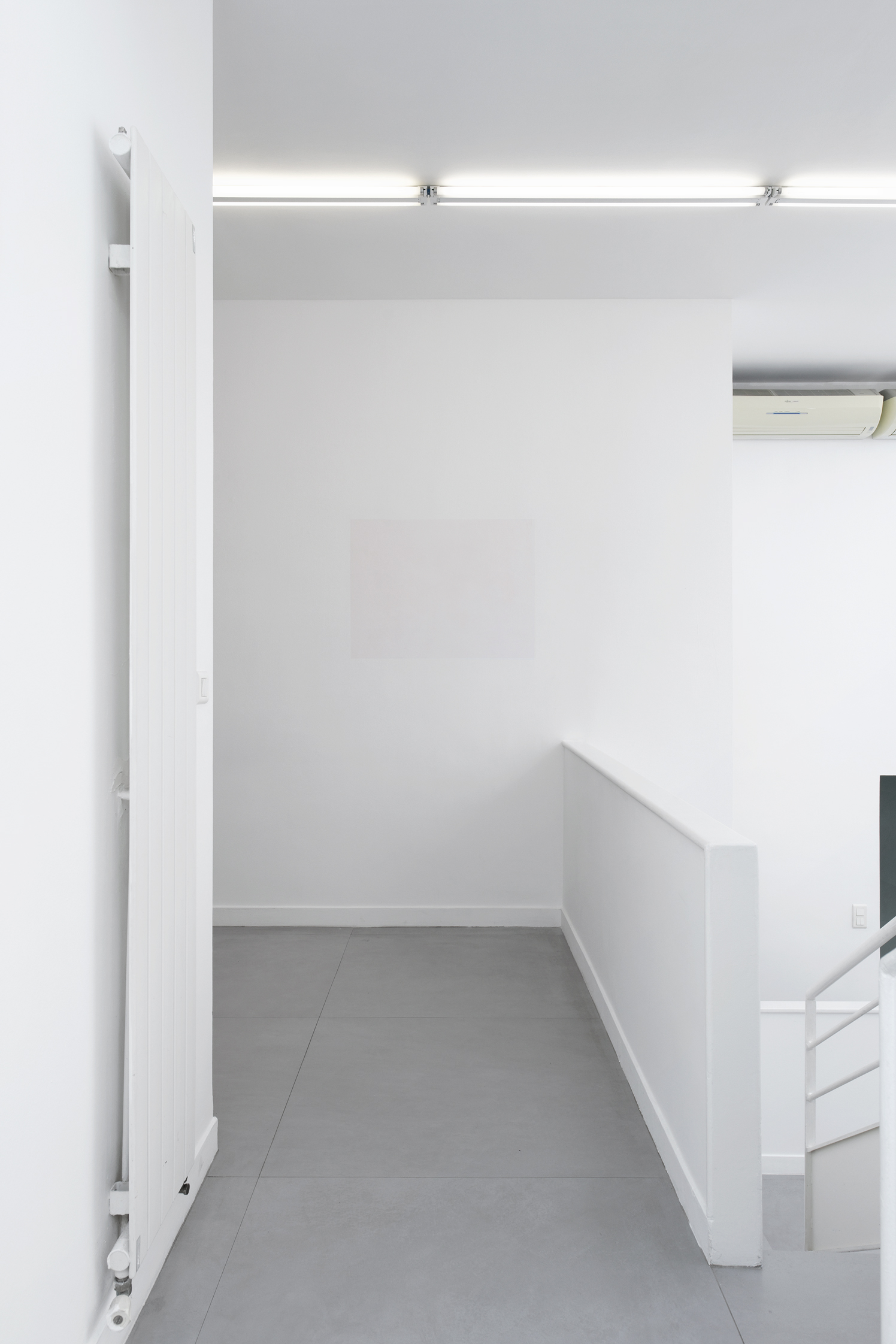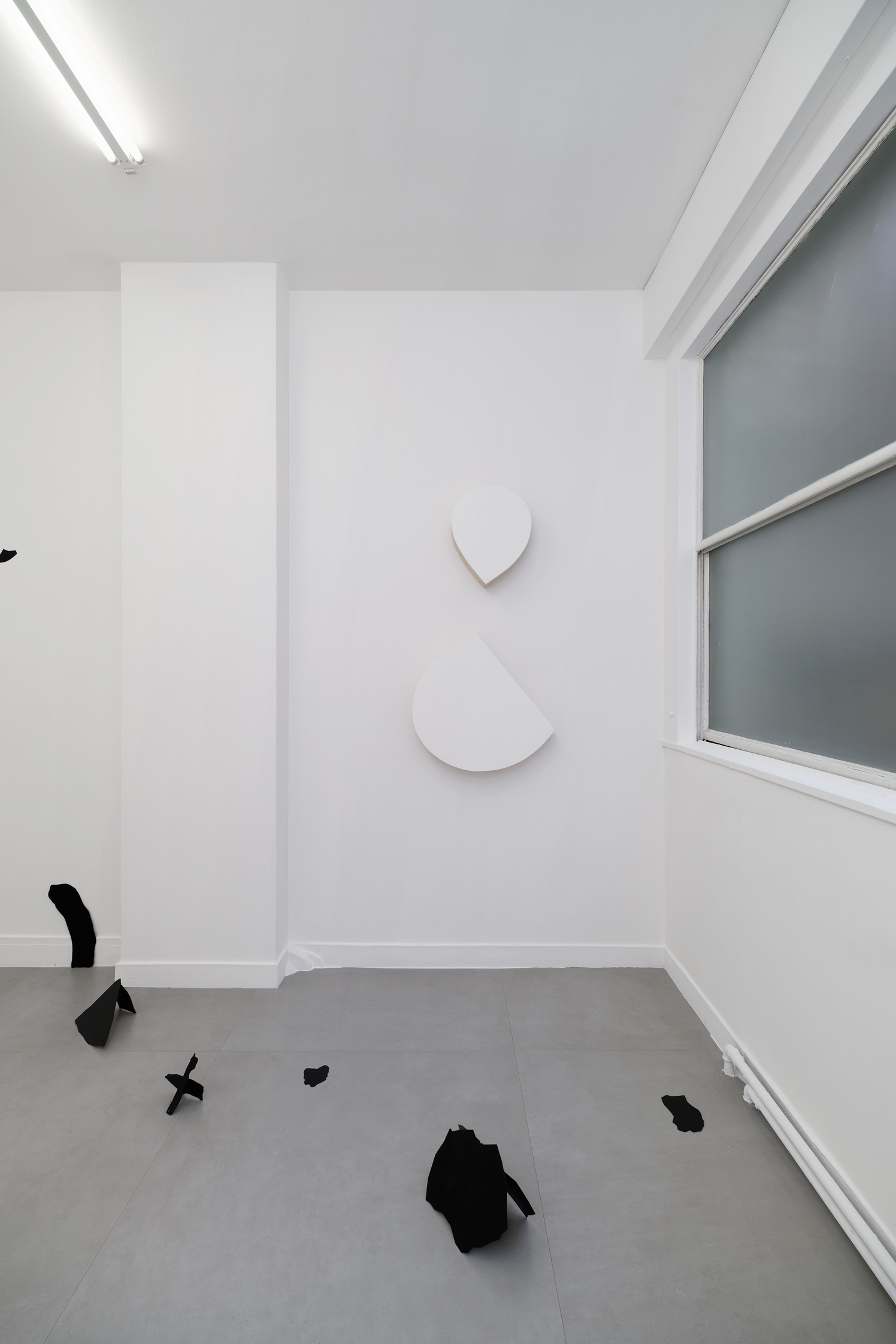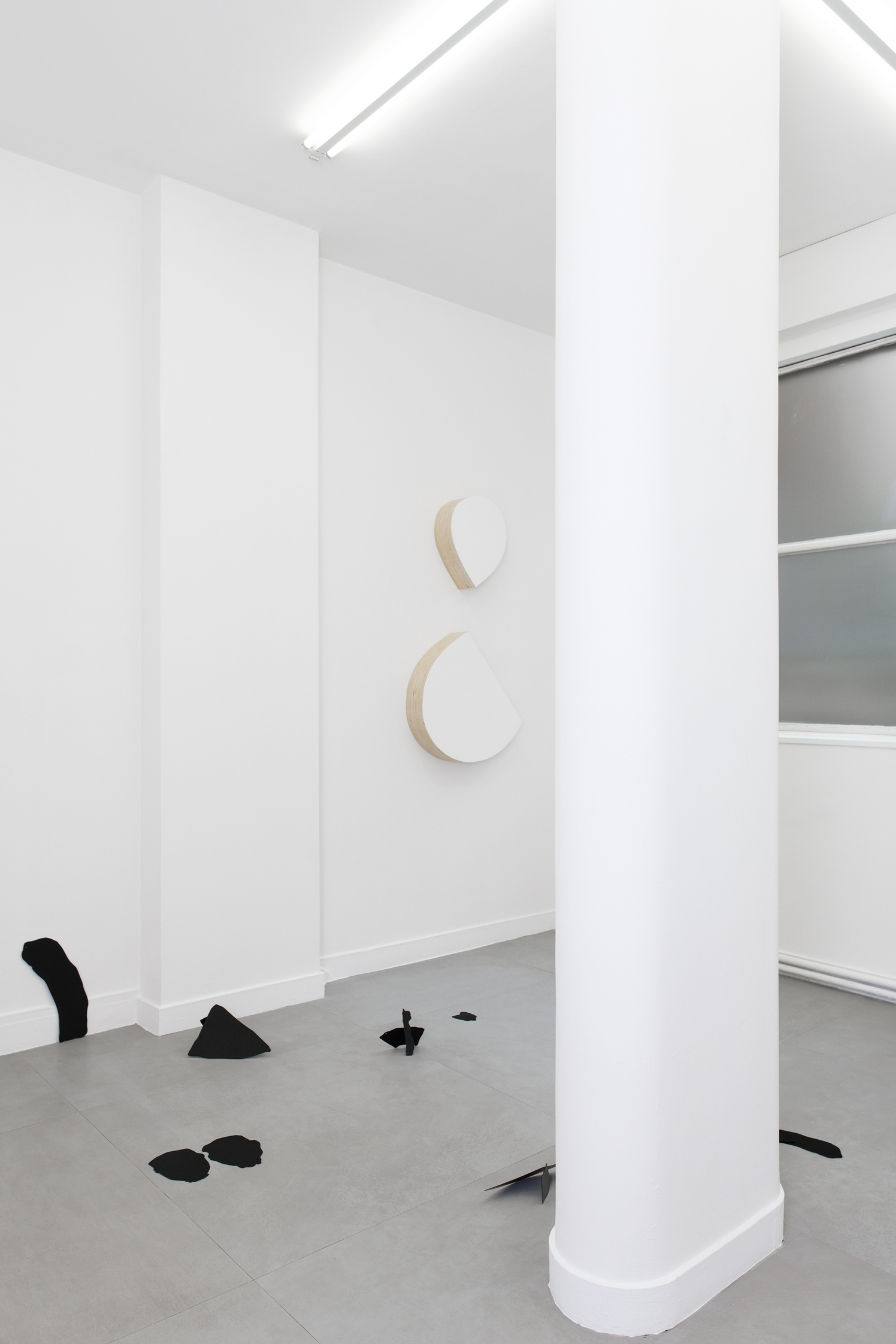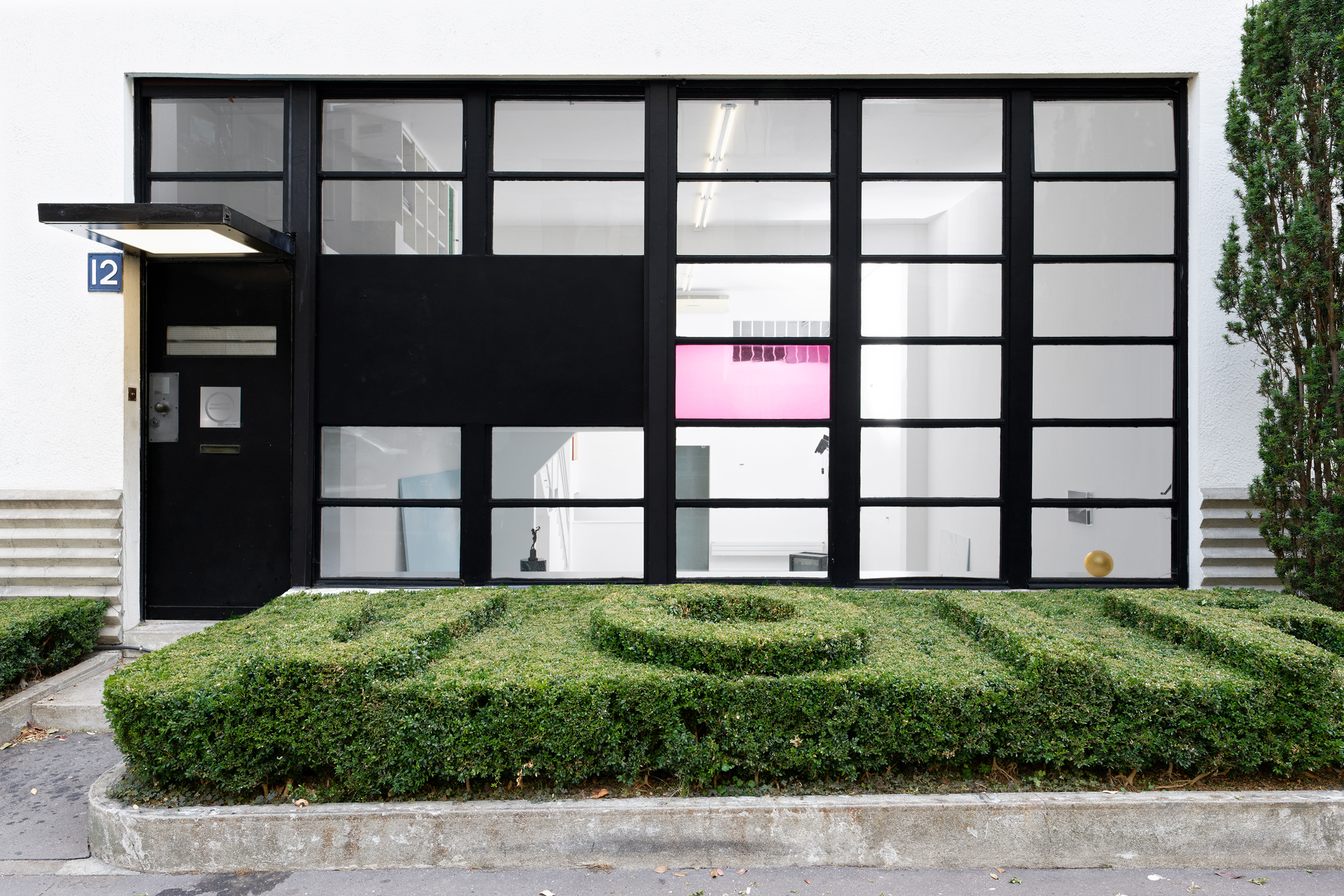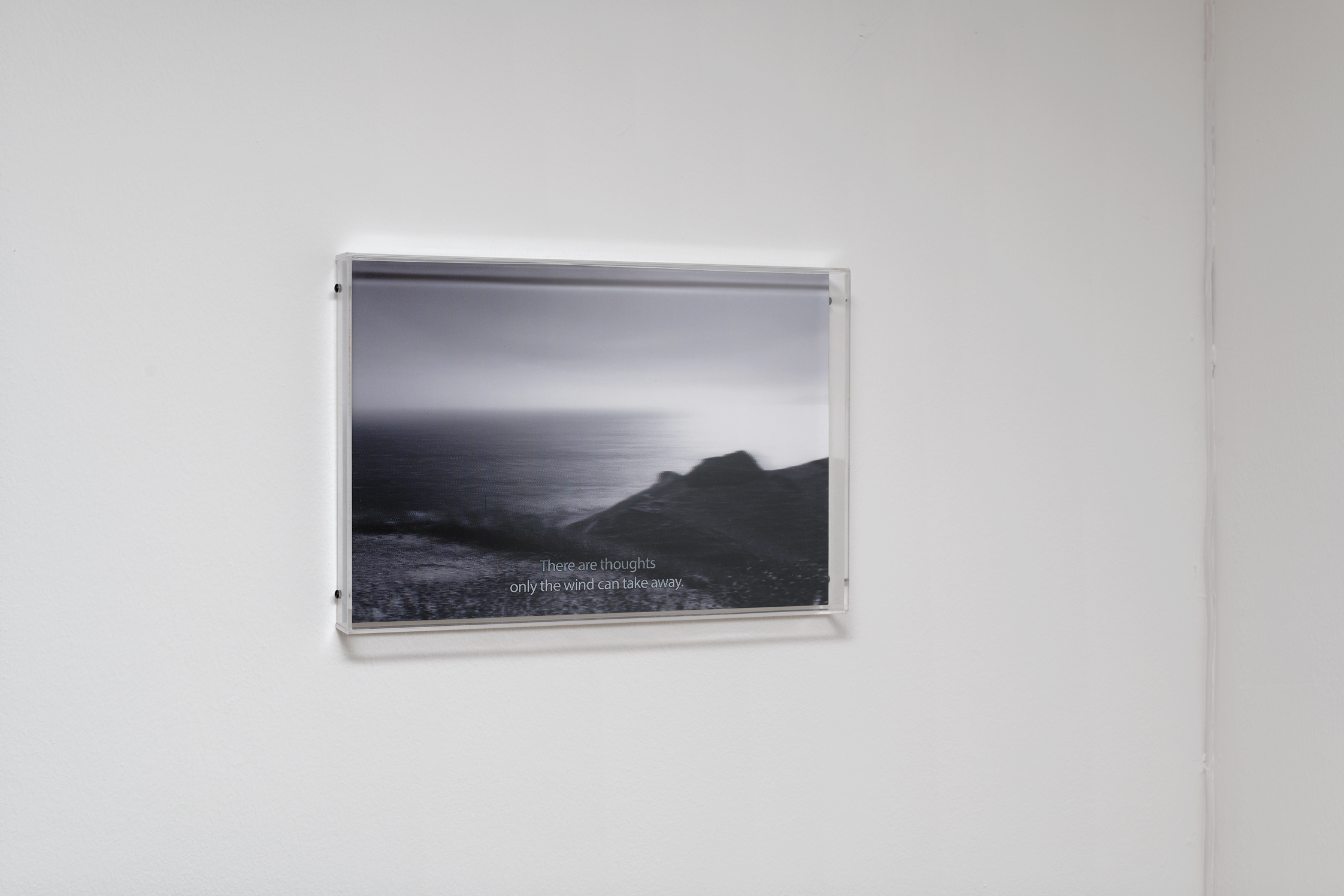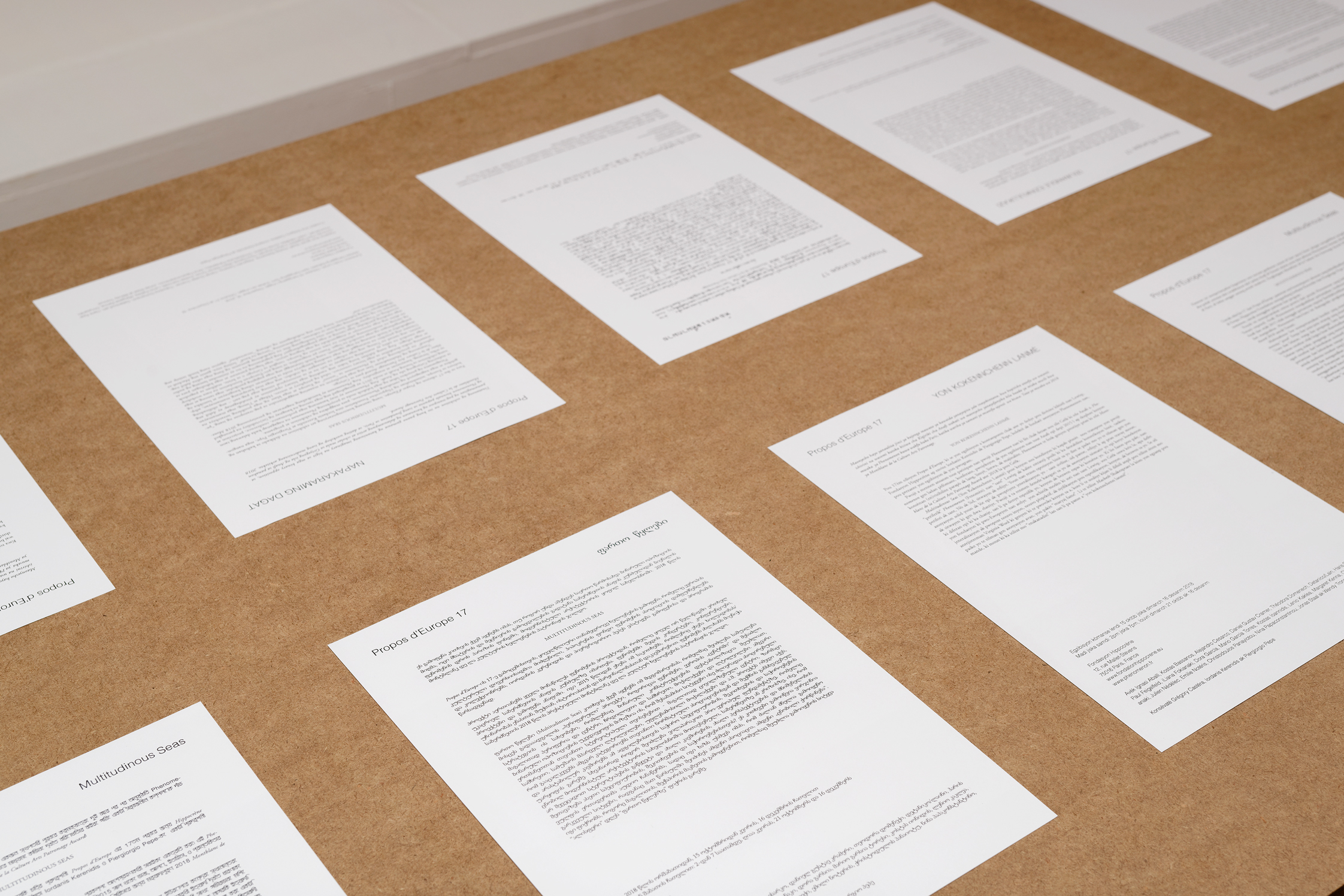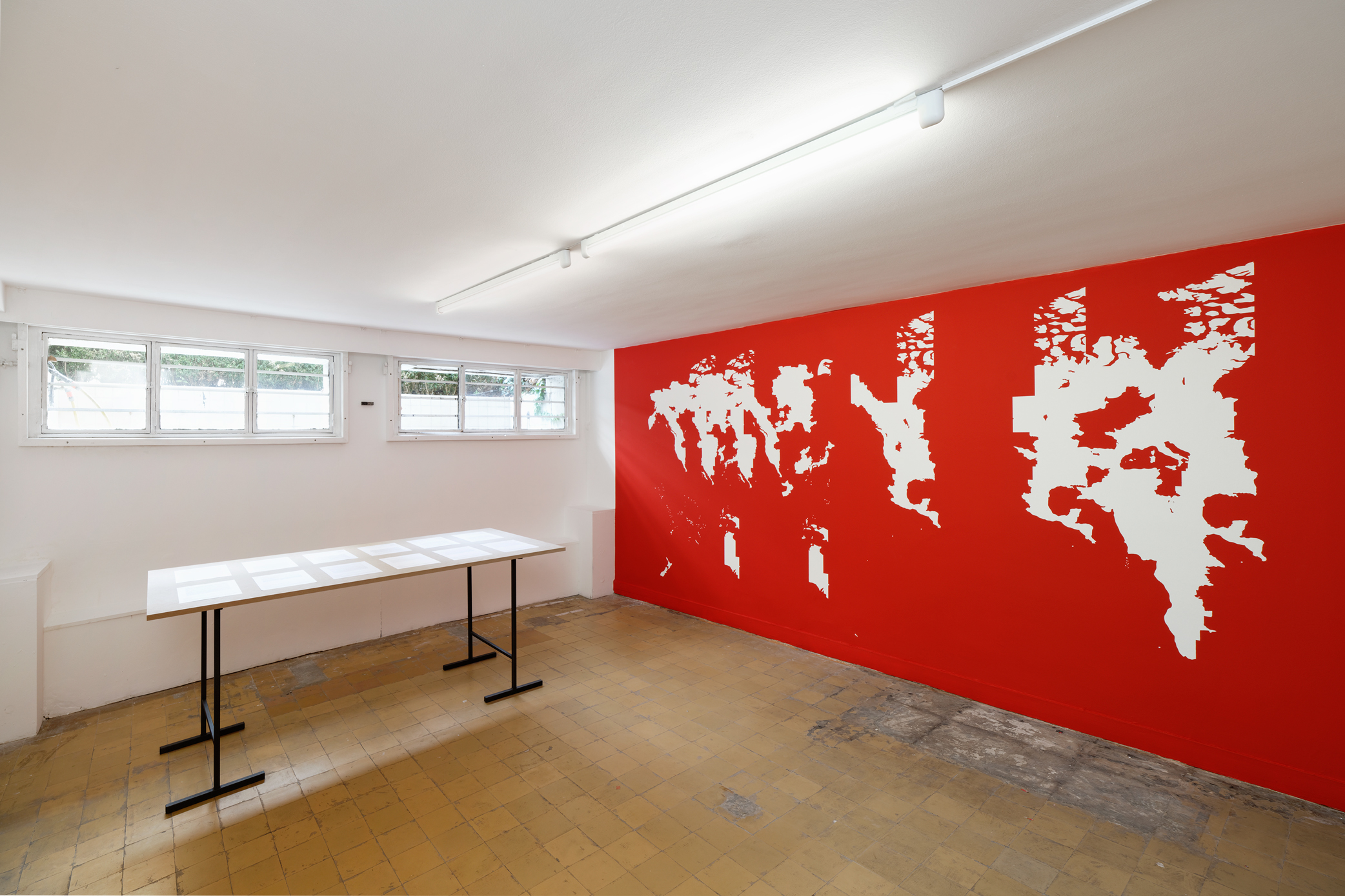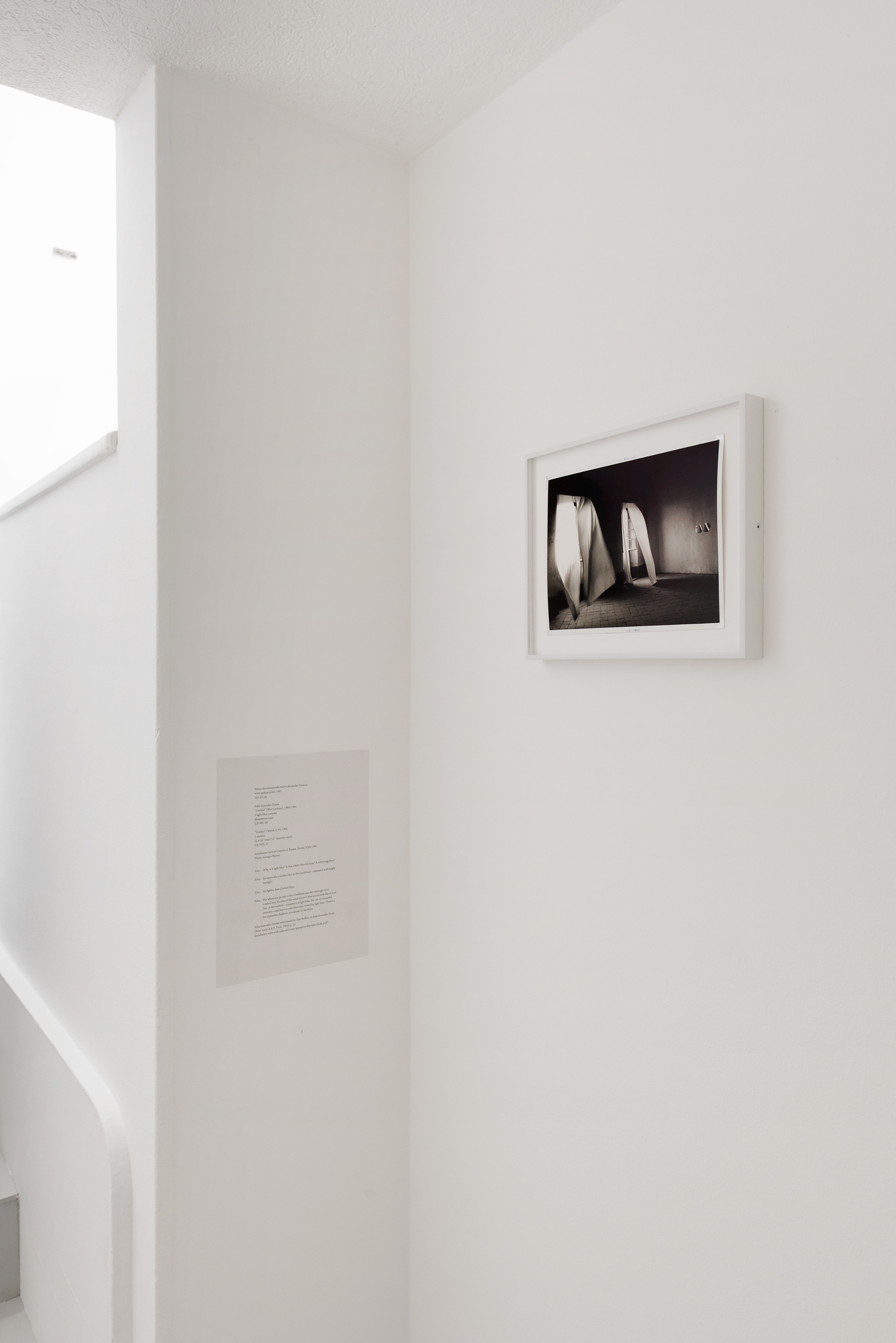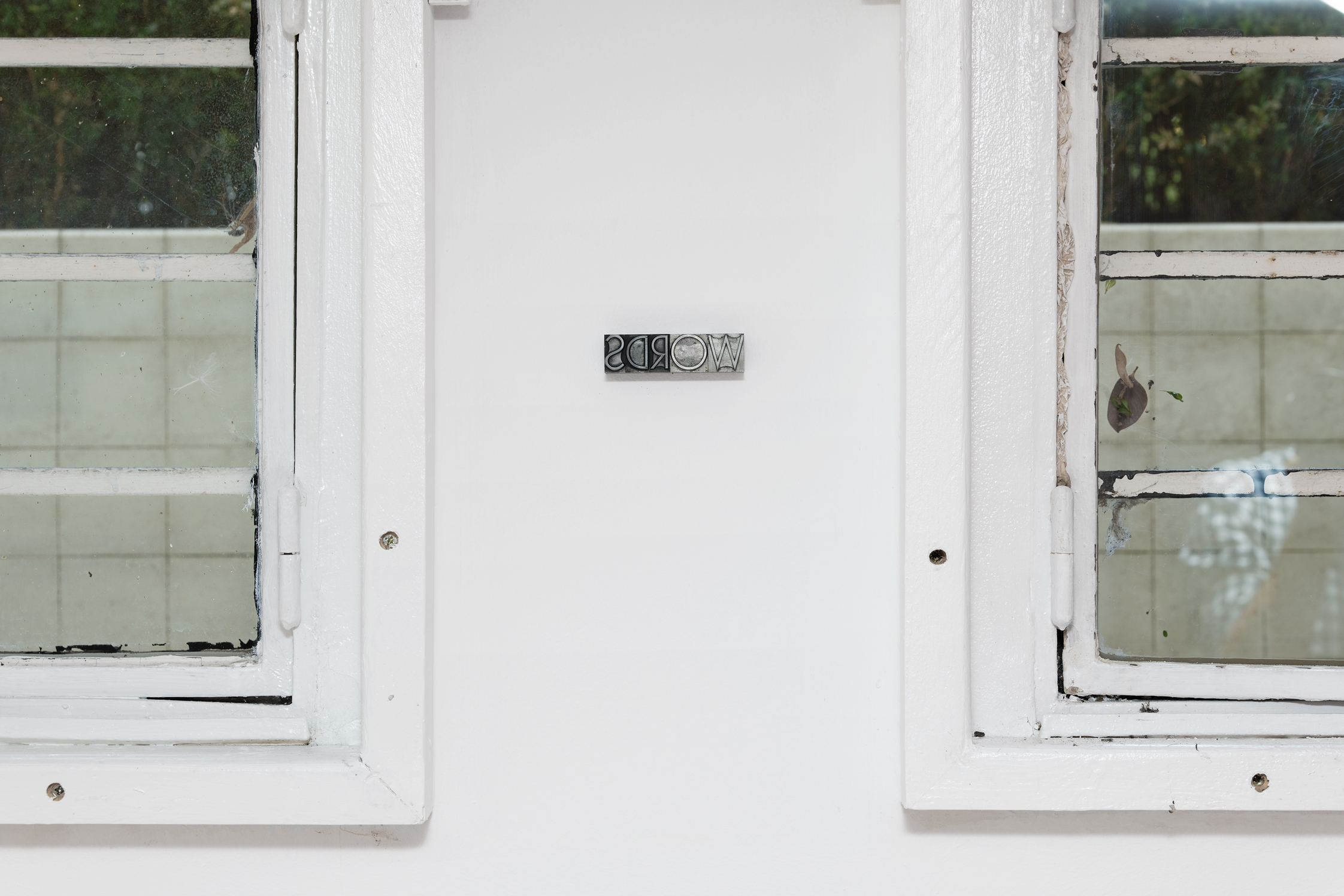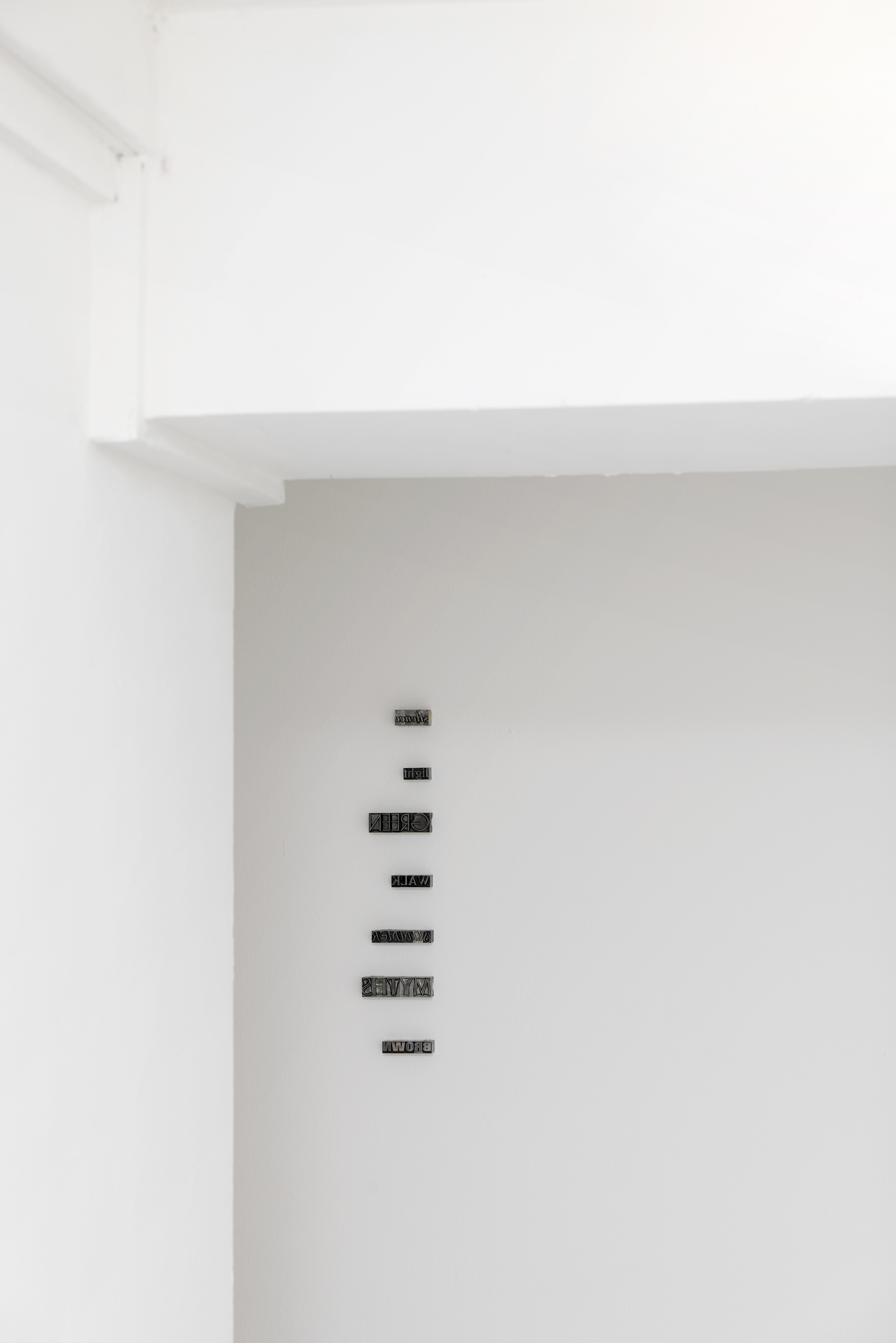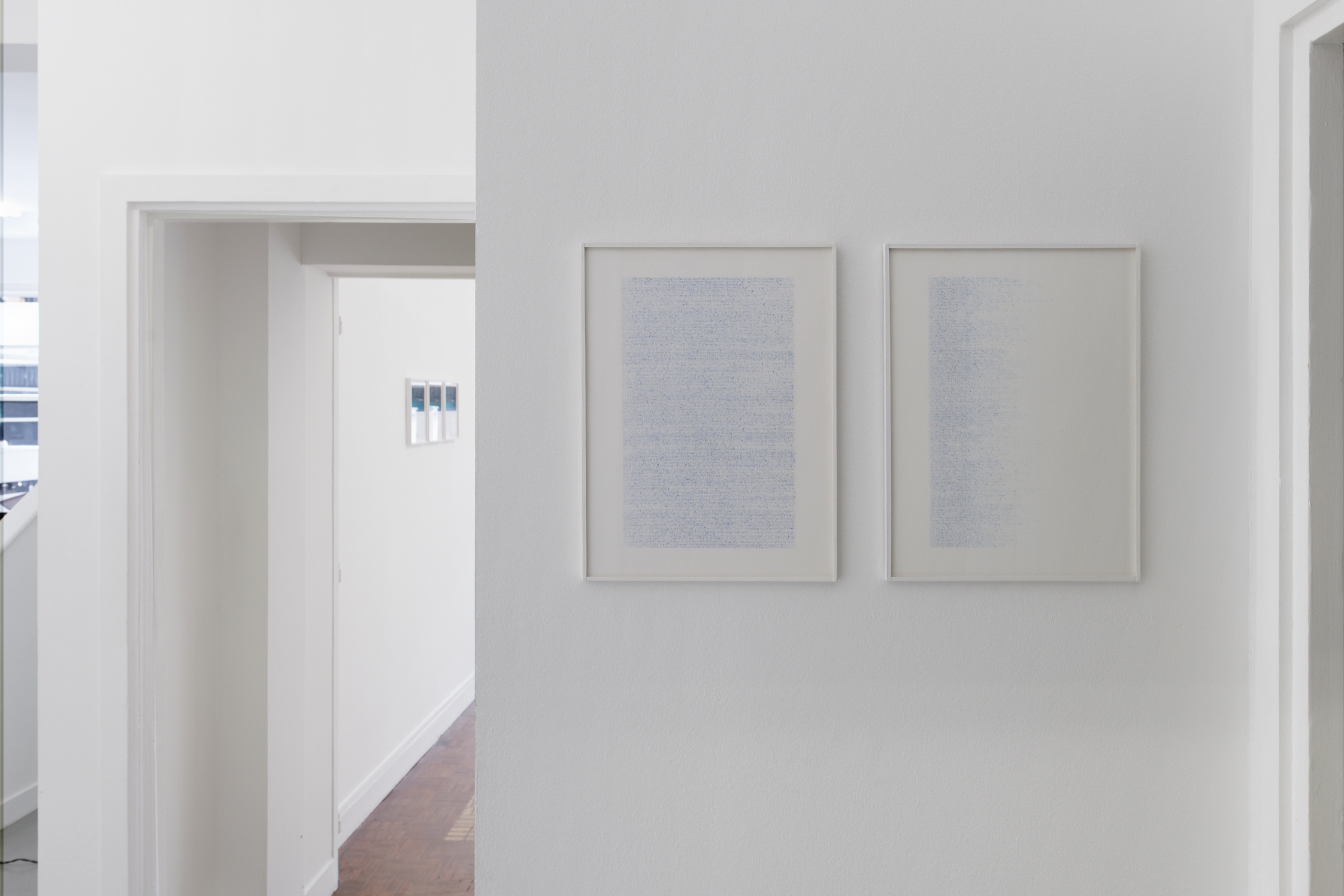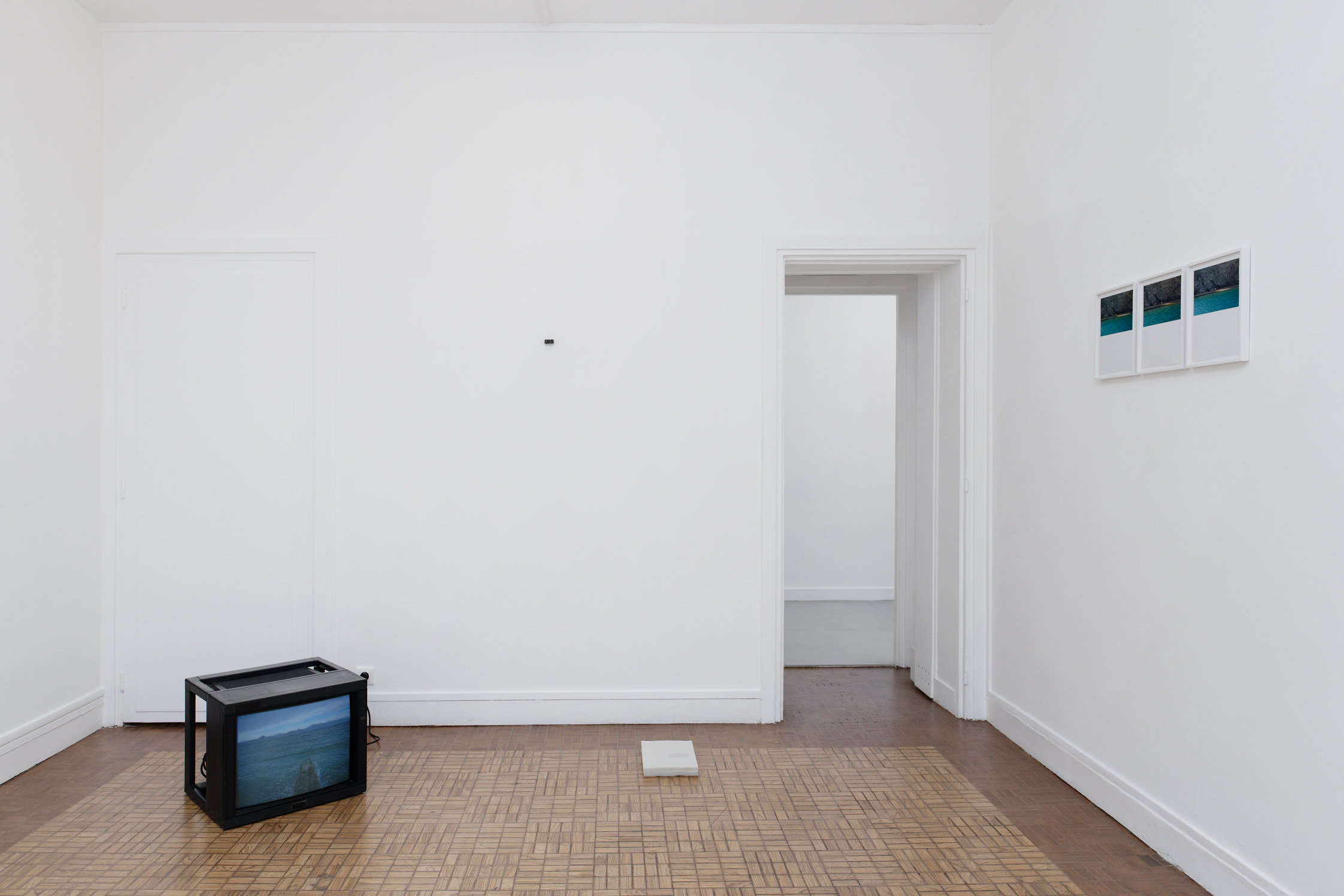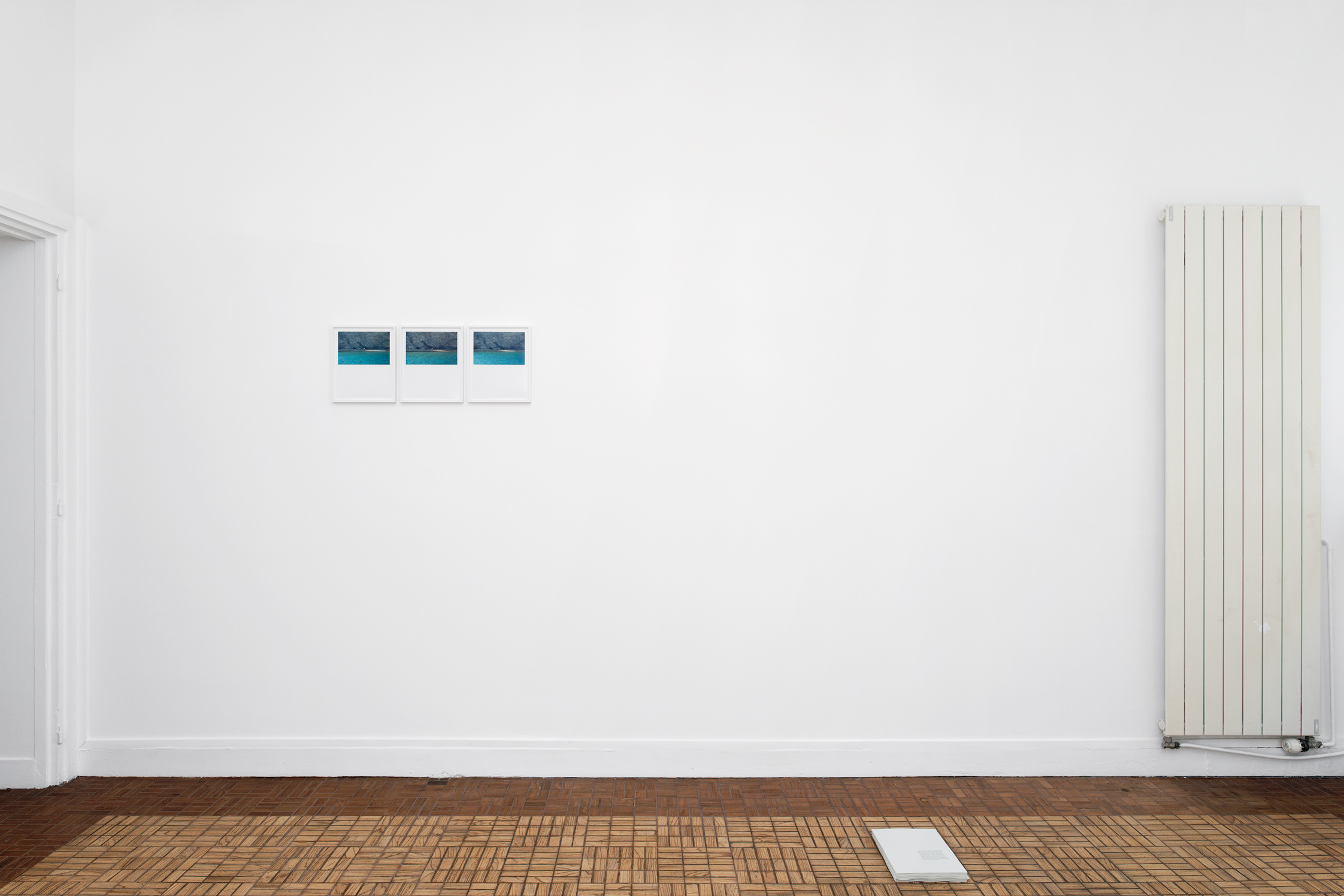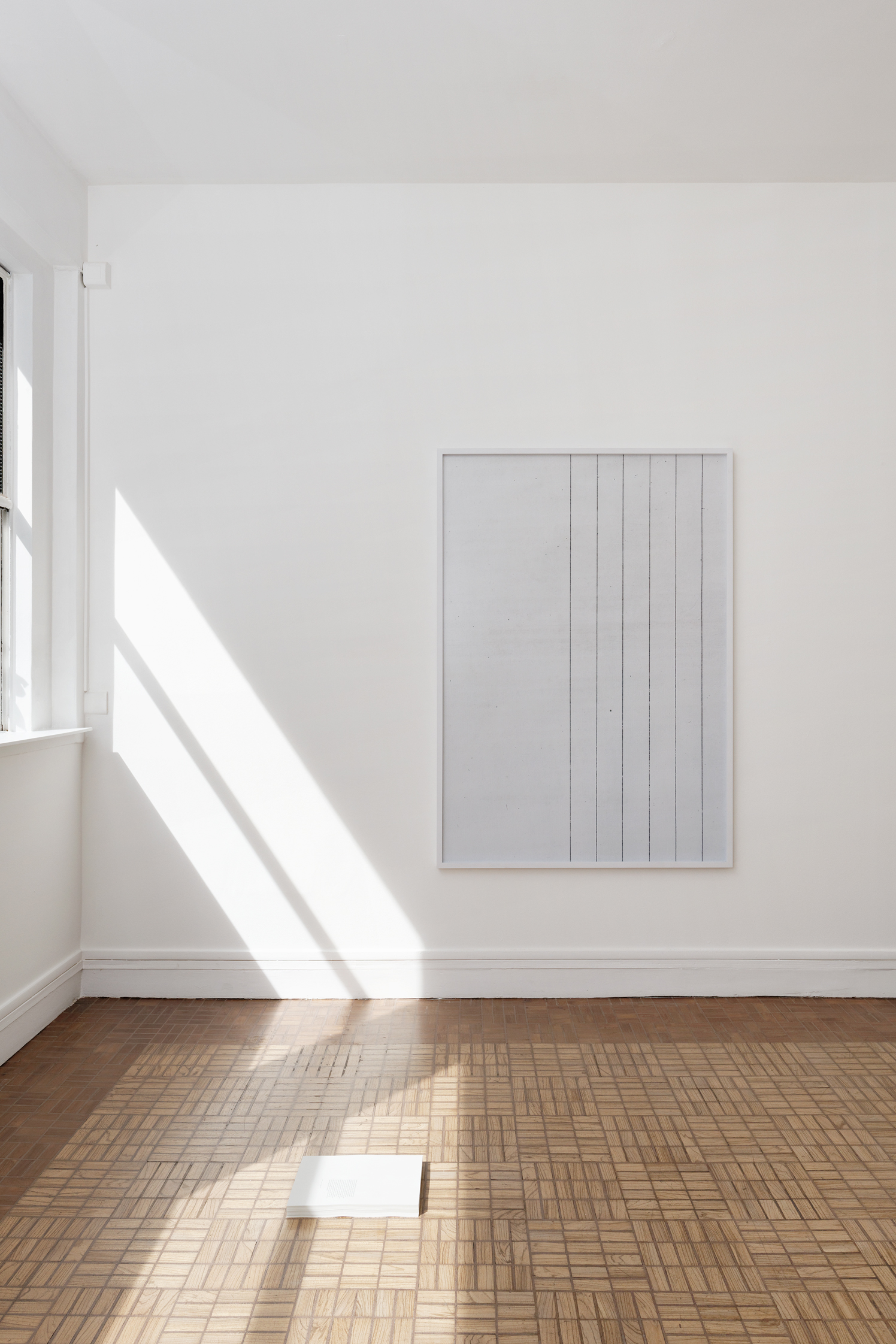Multitudinous Seas
15 October–16 December, 2018
Fondation Hippocrène
CURATED BY: Grégory Castéra, Iordanis Kerenidis and Piergiorgio Pepe
WITH: Ignasi Aballí, Kostas Bassanos, Alejandro Cesarco, Daniel Gustav Cramer, Théodora Domenech, Detanico/Lain, Haris Epaminonda, Paul Feigelfeld, iLiana Fokianaki, Dora García, Mario García Torres, Kostas Ioannidis, Lenio Kaklea, Margaret Kenna, Chrysanthi Koumianaki, Julien Nédélec, Émilie Notéris, Christodoulos Panayiotou, Nina Papaconstantinou, Jonas Staal, Wendy Tronrud.
Multitudinous Seas brings together all participants from the project Phenomenon that takes place every two years on the remote Greek island of Anafi. Phenomenon includes performances, conferences, projections and an exhibition throughout Anafi and has been exploring since 2015 questions around (in)visibility in relation to language, light, history, and marginality.
Multitudinous Seas questions the conditions that may enable transposing a “peripheral” project like Phenomenon to the “centre” of Europe and the types of possible strategies that can destabilize binary constructs, like periphery and centre, North and South, citizens and refugees. One reason that such binary oppositions are perpetuated is that the corresponding words have been so strongly associated with each other and with their stereotypical properties – the civilized centre, the lazy South, the job-stealing refugees, the entitled citizens, etc. The project hopes to disentangle such categories from their normative associations and create differential and unstable connections, without denying the specificities, questions and needs of the places concerned. How else to talk, in a pro-European foundation situated in the workshop of a famous modernist architect located in the center of Europe, about Greece or the crisis, other than trying to undo stereotypes and propose new unions, new perspectives, and meanings for such specificities, questions and needs? This questioning was triggered by the only audio recording of Virginia Woolf, where she underlines that it is very difficult to use certain words because they have contracted so many associations in the past, so many “famous marriages”. She wonders, using Shakespeare’s Macbeth as an example, who can use the word “incarnadine” without thinking of “multitudinous seas”.
Download the free catalogue, including a commissioned text by Émilie Notéris, here.
A CONVERSATION
GRÉGORY CASTÉRA, IORDANIS KERENIDIS, AND PIERGIORGIO PEPE
GRÉGORY CASTÉRA — How did you start to collect and support art projects?
IORDANIS KERENIDIS AND PIERGIORGIO PEPE — It started when we moved to Paris in 2006 and the process was quite similar to the one we still use today. Months of research and long discussions, until we feel comfortable to start a new experience. We started by looking at all the websites of the galleries in Paris, all the information they provided for their artists and after a few months we decided to enter a gallery and ask for information about a specific work. After a few hours of discussion with the gallerist on the work of the artists, this became our first acquisition, The World Justified by Detanico and Lain. Of course, it took some years before we began to see ourselves as collectors and when that realization finally occurred, we rapidly started to look for ways to challenge this normative role. We decided to become more active in the art world by creating and supporting art projects, like Phenomenon, or other public events, including interdisciplinary workshops or programs around our collection for the FIAC program. Assuming a more public role was probably due to a combination of not really fitting the stereotype of collectors and of coming to realize the potential of art to transform society. We see collecting not as a benevolent act or a “passion privée”, but as social engagement. We try our best to destabilize the role of the collector patron (same root as patriarchy and patronizing), decontextualize it, undo it, without any aspiration or hope for grandiose changes, yet being conscious of the importance of experiencing, experimenting, resisting, and reinventing it again and again.
GC — When I went to Phenomenon in July 2017, I saw the strong relation you have with the island and the inhabitants. You also shared with all the participants your research, among them the work of the anthropologist Margaret Kenna that is also presented in the exhibition. How did you learn about the existence of Anafi and why is it important for you to do a project there?
KP — Phenomenon morphed when many things came together. On one hand, we had been thinking for quite some time of ways to get involved in projects with artists as a way of supporting their work and providing them with conditions that would be different from the institutional way of working. On the other hand, our collection deals largely with questions of (in)visibility through light, language, historical formations. At that time, we happened to come to Anafi, probably the most remote and peripheral island in the Cyclades, when we got to know the myth regarding its name, an island that “appeared” (ανέφηνεν) when Apollo made it visible to the Argonauts during a dark night in the Aegean. This was the moment we conceived Phenomenon as a project that aspires to bring together artists, scholars, the public, the locals, enables new types of encounters, proposes alternative ways of creating and explores questions around (in)visibility. Our goal from the beginning was to involve Anafi as main participant of Phenomenon, researching the island’s history and socio-political context, through the work of Margaret Kenna as well, and involving as much as possible the inhabitants, the municipality, the artisans. Of course, the temptation to idealize Anafi is very strong, as the concept of a “remote island” has been deeply rooted in the collective literary imaginary. We have tried to look differently at this matter by refocusing on the fact that Anafi is a real place, with a tangible history and a contemporary focus, and with a population that constantly questions its present and its future, its location as a European periphery, its demographic decline, the scarcity of its environmental resources, its delicate relation to tourism.
GC — You have known and collected most of the artists of Phenomenon for years. In Phenomenon, the time we spent together seems to be as important as the works presented. How important is the relation to an artist in your appreciation of a work?
KP — One of the main reasons we conceived Phenomenon as a residency on a remote island in the Mediterranean is precisely to enable interactions and relations between all the participants, including ourselves, in a context that even if for just a little while escapes normative formats. The invited participants are both artists whom we have been following and supporting for a long time, and also artists whose work we respect and thus would be happy to cultivate a relation with them. We don’t think that having a relation to the artist is necessary to appreciate a work. The way we are constructing our collection is not by sampling works from many different artists but by supporting and, to the extent possible, acquiring a significant body of works through the years from a smaller number of artists. And of course, in this case, the relation to the artist becomes important in appreciating their work as a whole, their references, their obsessions, the risks they take, their journey. For us it is a privilege to be a part of this process.
GC — Your projects and most of the works exhibited have a sophisticated relation to humanities, translation, literature and poetry (Ignasi Aballí, Detanico and Lain, Nina Papaconstantinou, Julien Nédélec, Kostas Bassanos). For you, how is the experience of a work of art articulated through language?
KP — Experiencing the world in general is an intricate interplay between light and language, between what is seen and what is said. It is in the interstice between the visible and the discursive that creation happens, as Foucault says. What interests us also is how language or systems of representation more generally, provide the conditions for becoming visible, audible, utterable, and how art by questioning or by making apparent the biases of such systems, has the potential to denaturalise master narratives and create new ways of seeing. On a more personal level, translation has always been present in our lives: we have two different native languages, speak between us a third one and live in a city with a fourth one. This necessity to shift between systems and in the end speaking and thinking in “non-proper” languages not only enriches the experience of art but evidences the importance of partial perspectives and unstable encounters.
GC — Also, many pieces (Mario García Torres, Daniel Gustav Cramer, Haris Epaminonda, Dora García) preserve an uncertainty between the status of work of art and the status of ordinary object. Why are these post-duchampian gestures still necessary today?
KP — It is difficult to say anything about Duchamp that has not been said before and better, but for us Duchamp has made evident that art is social, in the sense that there are no strict distinctions between art and life, between artwork and ordinary object; art is action, art happens in the creative encounter of the artist and the audience. These objects are removed away from their sedimented functionality and find again their potentiality, their subversive multiplicity. This is especially true when they are used in intensive networks, as in the work of the artists you mention, where unexpected connections appear and disappear in dynamic processes. The force of art for questioning singular points of view and naturalized concepts, is more than necessary today with the rise of authoritarian and populist ideologies.
GC — As in the main essay of the exhibition guide written by Émilie Notéris, as well as in the installation by Christodoulos Panayiotou, there is often some reference to queer theory and feminism in your projects. How do you try to queer the collection and the exhibition?
KP — Through the art we collect and the projects we support we hope to question concepts like normativity and privilege, and aspire to having a real social impact. This does not imply that we primarily support or collect directly politically engaged art. Rather, we are interested in art that conceptually challenges the conditions that enable these predominant systems of representation and governance, such as heteronormativity, to appear unquestionable and natural. We believe it is between the political and the intimate that art generates forms of resistance, and we see our role as collectors to support precisely these dynamics. In a similar fashion, the exhibition tries to undo preconceived stereotypes, about the periphery, the crisis, or citizenship, and construct non-hierarchical assemblages of artworks, archival material, audio-guides, a public program, thus allowing the works to retain their indeterminacy, create their own contingent relations, find escape routes and produce new strategies for social engagement.
GC — We talked about the relations that the exhibition cultivates with the time spent together, with language, with the heritage of readymade, and with queer theory. How do these approaches of art allow the exhibition to address “how to construct a common imaginary beyond binary oppositions”?
KP — What all three of us try to do, to the extent possible, with this exhibition is to blur these binary distinctions that perpetuate mechanisms of oppression, whether this is patriarchy or capitalism, and try to bring people together as a way of imagining new ways of collective life. As in Phenomenon, the project is not just an exhibition, but it will also involve almost all the artists and scholars coming to Paris and spending time together, a large number of visits with the curators during the two months of the exhibition, a public program focusing on the the rise of authoritarian ideologies in Europe. We believe in strategies that keep destabilising the system through micro-actions, enabling encounters of differential forces and interests, creating common collectivities, undoing them, and continuing the struggle all over again. This is hopefully reflected in the way the exhibition circumvents oppositions between Anafi and Paris, centre and periphery, between the political and the personal, and investigates the creative and political potential of the unstable in-between.
GC — After ten years of collection and projects, how do you envision the next years?
KP — “The future must be dangerous.”
WORKS
IGNASI ABALLÍ
30 words (one time), 2018
Lead typographies
Variable dimensions
Words related to a landscape of Anafi interplay with the architecture, creating a potential imaginary.
KOSTAS BASSANOS
Anywhere but here, 2015–2016
Video, audio, 10 min.
Variable dimensions
The video shows the artist throwing the letters of the sentence “Anywhere but here” one by one in the Mediterranean Sea.
ALEJANDRO CESARCO
The dreams I’ve left behind, 2015
Silkscreen on wall
65,5 x 88 cm
A faint image of the wall behind the artist’s bed is silkscreened directly onto the exhibition wall.
Not Titled, 2018
Framed silver gelatin print, wall text
Variable dimensions
DANIEL GUSTAV CRAMER
Untitled (Mare II), 2016
C-print framed, museum glass
151 x 106 cm
Tales, 2018
C-print, 3 frames
25 x 20,5 cm each
Anafi, Greece, 11 August 2015, 2016
Paperstacks, printed
30 x 22 x 25 cm
The artist presents an assemblage of works that include a photo of an old nautical map, three fragments of a story, a series of photos of a man on a beach on Anafi.
DETANICO/LAIN
Multitudinous seas (Timezonetype), 2018
Wall painting
Variable dimensions
The title of the exhibition, Multitudinous seas, is written in a new typeface created by the artists, based on the American astronomer Nathaniel Bowditch’s system where the Earth’s 24 time zones are each represented by a letter of the Latin alphabet.
HARIS EPAMINONDA
Untitled #01 g/j, 2018
Trompe l’oeil painting on wooden structures, columns and metal spheres, various bronze figurines, framed found book page, small Japanese bronze vase, variable dimensions
Untitled #02 g/j, 2018
Japanese lacquered bowl, black metal powder coated frame, trompe l’oeil painting on wooden structure, variable dimensions
Untitled #03 g/j, 2018
Japanese wooden carved Koi fish, trompe l’oeil painting inside wooden box, variable dimensions
Untitled #04 g/j, 2018
Two gilded metal spheres, trompe l’oeil mural on existing platform, variable dimensions
Through a series of interventions in dialogue with the architecture of the building, the artist proposes a space where ancient and modern imaginaries confront each other weaving multiple narratives.
DORA GARCÍA
Letters to other planets, 2005
12 printed press releases in 12 uncommon languages
Variable dimensions
MARIO GARCÍA TORRES
Thoughts and the wind (a film treatment), n.d.
Two lenticular prints
22 x 32 cm each
Thoughts and the wind (a film treatment), n.d. is the sketch for a film-to be shot on the island of Anafi, Greece. Four image frames that are contained in two lenticular prints compose the work. The two prints are identical with the exception that the subtitles in them is slightly different. The piece suggests that in that location, a film could be made by standing on a single spot, looking at a single point on the horizon, letting thoughts to be taken away and brought by the wind. This would create a story.
LENIO KAKLEA
A Hand’s Turn (pages), 2017
Paper stacks, printed
21 x 29,7 cm
These paper stacks are used during the performance “A Hands Turn” (16/12/2018).
MARGARET E. KENNA
Harry New Year Thinking of You, Lone Dad Mym, 1967
Telegram
21,1 cm x 16,2 cm
A telegram received by Margaret Kenna from her parents during her Anafi fieldwork as a young anthropologist. The text exists in an interstice of misunderstandings between the Latin and Greek alphabet.
Far from God, twenty years ago on a Greek island, 1987
43 min. digitalised VHS video.
In this VHS video, the anthropologist edited a collection of photographs from her Anafi fieldwork from the 1960s to the 1980s with a soundtrack made of her own recordings during her fieldwork. The video has different sections dedicated to various areas of anthropological focus.
CHRYSANTHI KOUMIANAKI
A Band Called Phaistos or Nestor or Mycenae, 2017|
Installation, metal cut outs, powder coating, magnets, fanzines
Variable dimensions
The shapes of archaeological fragments found in old museum catalogues are cut as black metal surfaces, becoming indeterminate signs to be reconfigured anew.
JULIEN NÉDÉLEC
Et qui par lui-même est un et, 2015
Plywood, laquer paint
120 x 60 x 12 cm
The negative space in the “&” symbol gives form to this sculpture. “AND is neither one thing nor the other, it’s always in between, between two things; it’s the borderline, there’s always a border, a line of flight or flow, only we don’t see it, because it’s the least perceptible of things. And yet it’s along this line of flight that things come to pass, becomings evolve, revolutions take shape.” (Gilles Deleuze)
CHRISTODOULOS PANAYIOTOU
Untitled, 2018
Pink stained-glass window
41,5 x 84,5 cm
On the façade of the building, one of the original windowpanes is replaced by a pink tinted glass. The colour pink alludes to its disappearance from the LGBTQ+ rainbow flag in 1978, due to a shortage of pink fabric in the US.
Untitled, 2015
Paint and gold on wood
100 x 70 cm
An icon is made in the traditional hagiographic process that has been interrupted before the image appears.
NINA PAPACONSTANTINOU
Pablo Neruda, Love Poems, 2, 2017
Carbon copy ink on paper (transcribed in Spanish)
38,5 x 29 cm
Anne Carson, Short talks, 2, 2017
Carbon copy ink on paper (transcribed in English and Greek)
38,5 x 29 cm
In the series Phantoms appear the serendipitous traces left from a second carbon while the artist transcribes the entire book on a single white page.
EVENTS
DORA GARCÍA
La peste, 2018
Performance. Text Activation
Invited to take the artistic direction of the opera The Plague by Roberto Gerhard, Dora García starts to dissect the novel La Peste by Camus, of which this text activation is one of the first episodes. Performer: Geoffrey Carey.
ILIANA FOKIANAKI, JONAS STAAL
After Europe: Art as the spectre over the union
Lecture
In relation to the current sociopolitical climates, that have been re-enforcing logics that exclude, alienate and divide, where does art stand as a possible alternative to the fragmentation experienced throughout the European Union? Curator iLiana Fokianaki and artist Jonas Staal will discuss their work and practice as cultural workers that propose curatorial and artistic models aimed to contribute to re-imagining different states, societies, parliaments and political campaigns.
LENIO KAKLEA
A Hand’s Turn, 2017
Performance
A Hand’s Turn is a choreographic piece and a book. In this work, Lenio Kaklea exposes the gestures of reading, the pages turned from right to left which, in a slow and continuous beat, unfold a duration, a trajectory, a story. Presented during a session for one or two viewers, it invites us to think about the situation constructed by this practice. The particular itinerary of the regard focused at and projected on the space of the page, the decryption of the signs, the hand movement that accompanies the production of affects and the body that stands on the sidelines. After the session, the visitors are invited to purchase the book. What was an exchange can now be experienced by the reader performing the choreography for him-herself.
GRÉGORY CASTÉRA, IORDANIS KERENIDIS, PIERGIORGIO PEPE
Phenomenon 3 (1–14 JUILLET 2019)
Conversation in English
ONLINE
Invited scholar participants of Phenomenon were asked to propose a sound recording to listen to before, during or after the show. Click on the titles to listen.
THÉODORA DOMENECH
Dictionnaires, 2018
5 min. 14 sec.
“While I find Woolf’s distinction between the words of the mind and the words of the dictionary interesting, I see no other tool to displace the rigidity of dogmatic definitions (and all dichotomies) than the writing of new dictionaries, and the proposal of new definitions. The initial goal of phenomenology is precisely to question the status and legitimacy of logical categories in lived experiences of consciousness. I therefore insist on the necessity of the existence of categories, of dichotomy, which goes hand in hand with that of their constant questioning.” (T.D.)
PAUL FEIGELFELD
The sirens of the lands, 2018
5 min. 16 sec.
“We landed on Anafi and told old tales of Sirens, who tried to lure Odysseus into shipwreck and love – Homer’s insular narrative at the core of Europe’s culture. A few days later, over seventy children, women and men, who had to flee warzones and their homes, stranded on Anafi. Their first glimpse of Europe, this continental Siren Island calling out and sinking ships before its shores, a remote and barren rock, promising paradisiac safety, yet alien, like Europa, Jupiter’s moon. In this recording, we hear fragments of languages and music from all these islands in history and space.” (P.F.)
KOSTAS IOANNIDIS
Constantine P. Cavafy, Του πλοίου (read twice), 2018
1 min. 18 sec.
“The poem “Του πλοίου” (Of the boat) by Constantine Cavafy is about sketches and memories that change, fade, complement and compete with each other as time goes by. I am reading the poem omitting words that Cavafy made his own. I am trying to hear their sound ignoring his intentions in order to see what is left that resists or remains.” (K.I.)
WENDY TRONRUD
Making the green one red, 2018
10 min. 47 sec.
“Both the material of the oppressed and oppressors, words move, collect and subvert, but also hollow out, limit and calcify into what Toni Morrison calls “shocking glitter” in her 1993 Nobel Prize speech. Using Virginia Woolf’s allusion to William Shakespeare’s Macbeth in her only surviving recording, my text considers the surfaces, depths and forms of agency given to language’s potential to navigate between and amongst us.” (W.T.)
